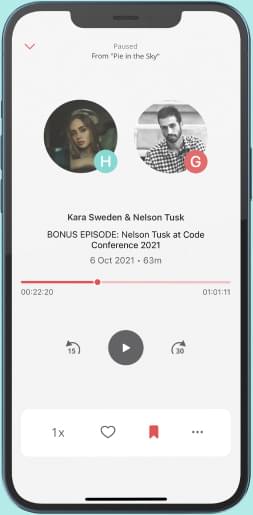
To lead well, you must train your brain to lead. When your nervous system is calm, you think clearly, make better decisions, and build stronger relationships. When it is hijacked by stress or fear, even the most experienced leader can lose presence and perspective. In this episode, executive leadership coach Nataly Huff, founder of Inspire Forward, explores the neuroscience behind composure, emotional regulation, and the stories we tell ourselves when we are triggered. We dive into what really happens during an amygdala hijack, why your prefrontal cortex becomes depleted, and how to use your body’s cues to regulate your nervous system in real time. Nataly shares science-based strategies to pause before reacting, leverage tools like box breathing and compartmentalization, and reframe inaccurate thoughts before they spiral into conflict. Together, we explore what it truly means to train your brain to lead, not by suppressing emotions but by understanding them. If you have ever left a meeting thinking, “Why did I react like that,” this conversation gives you the self-awareness and practical tools to stay grounded, curious, and in control. About Nataly Nataly Huff is an executive leadership coach with 15 years of corporate experience. She blends neuroscience and emotional intelligence to help emerging executives elevate their leadership impact. Learn more and book a discovery call at inspireforward.com. What we cover • The brain’s happiness chemicals and how to leverage them for better performance • Amygdala hijacks and how to recognize, interrupt, and reset • Practical nervous system regulation through box breathing, 4 7 8, and sensory grounding • Healthy compartmentalization: when to use it and when to unpack it • The Think → Feel → Do framework and Byron Katie’s Four Questions for challenging limiting stories • Triggers, ownership, and radical honesty, and how to lead yourself first • Why the goal is not perfection but a faster recovery loop Key takeaways 1. Name it to tame it. Notice your physiological cues, label the amygdala hijack, and pause before reacting. 2. Breathe with structure. Try box breathing or 4 7 8 to bring your attention back to the present. 3. Compartmentalize with intention. Put it in a box now and plan when you will process it. 4. Interrupt the story. Ask, “Is it true? Can I know for sure,” before assuming the worst. 5. Progress over perfection. The more you train your brain to lead, the faster you recover and the stronger you show up. Mic drop moments • “There is no bear. It is just an email.” • “Your prefrontal cortex cannot run on empty. Fuel it or you default to reaction.” • “Compartmentalization is powerful if you open the box later.” • “Honor the pattern before you release it. It helped you survive and succeed.” • “Leadership is not the absence of triggers. It is ownership of your recovery.” Resources mentioned • Breathwork: box breathing, 4 7 8 breathing • Frameworks: Think → Feel → Do, Byron Katie’s Four Questions Connect with Nataly Website: https://www.inspire-forward.com LinkedIn: https://www.linkedin.com/in/natalyhuff Instagram: @inspirefwdcoaching Tik Tok: @https://www.tiktok.com/@inspirefwdcoaching Book a Free Call: https://www.inspire-forward.com/book-a-free-call Rewiring Your Leadership Brain https://www.inspire-forward.com/rewiring-your-leadership-brain Connect with Kerry Visit my website, kerrysiggins.com, to explore my book, The Ownership Mindset, and get more leadership resources. Let’s connect on LinkedIn, Instagram, or TikTok! Find Reflect Forward on YouTube: https://www.youtube.com/@kerrysiggins-reflectforward Find out more about my book here: https://kerrysiggins.com/the-ownership-mindset/ Connect with me on LinkedIn: https://www.linkedin.com/in/kerry-siggins/
From "Reflect Forward"


Comments
Add comment Feedback